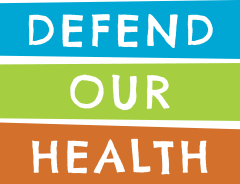Testing for PFAS in Fairfield: why transparency matters
September 13, 2021 | Legislative Campaigns | Tags: Contamination, Dairy, Fairfield, Farm, pfas, Testing
If you’ve been following our work here at Defend Our Health, you know that we’ve been deeply involved with the widespread PFAS contamination in Fairfield, ME, since we found out that the past use of municipal and industrial sludge as fertilizer from the 1970s-2000s destroyed Fred Stone’s family dairy farm.
From the start, we have joined residents from Fairfield and nearby towns in asking for transparency around the PFAS problem — how widespread is the problem really? And how bad is it?
Following the building pressure to investigate PFAS, Maine’s Department of Environmental Protection began testing potentially contaminated sites in and around Fairfield. They started with known sites of contamination and have expanded based on where they find high levels PFAS. While testing has focused on drinking water, DEP is also testing soil and surface water.
Here’s what we know so far from their publicly available data:
In total, 716 sites have been tested in Fairfield and the nearby towns of Oakland, Benton, and Unity.
Of the tested sites, 50% (356) are over the 20 parts per trillion (ppt) interim drinking water limit. And not just by a little bit. Nearly 30% of all tested sites tested over 200 ppt, or 10 times the interim limit. 16% tested are 100 times over at 2000 ppt or more. and 4%, representing 29 sites, reported over 20,000 ppt. That’s over 1000 times the interim limit! That means the families at these 29 locations are exposed to more PFAS in their drinking water in a month than anyone should be in a lifetime.

The results begin to give us a picture of just how widespread the problem is: as we’ve suspected, Fred Stone’s farm was just the tip of the iceberg.
It’s a good thing that this information has come to light, and it’s why we fought for LD 1600 (and won!): it’s a new law that requires the state to test farmland treated with municipal and industrial sludge for PFAS contamination. Data collection, testing, and monitoring are a necessary part of keeping state agencies and industry accountable. When there’s more testing, we can use that information to better support affected communities.
But it’s only the first step in untangling a big, messy problem. State agencies have pushed back against more testing and transparent reporting. Industry groups keep insisting that PFAS is safe and necessary for our modern lives, even as the scientific evidence pointing to the health impacts of PFAS keep mounting.
We’ll keep pushing for greater transparency and for the rights of affected community members. Join the fight today by joining our mailing list to keep updated on what we find out about PFAS in Fairfield and beyond.
